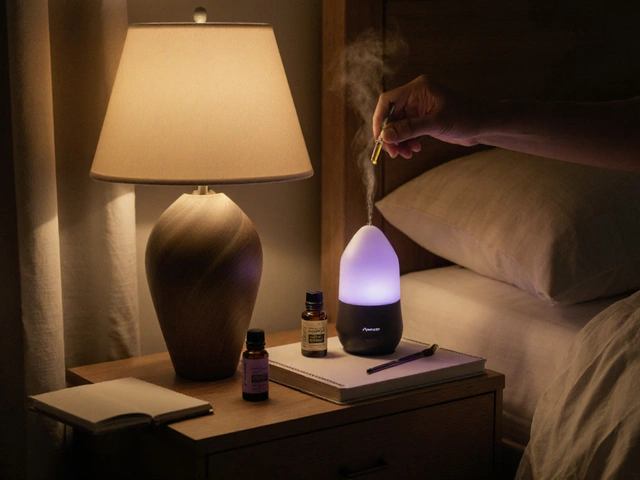Mental Health: Practical Tools to Reduce Stress & Anxiety
Do worries keep replaying in your head like a broken song? You're not broken — your brain is doing what it thinks will protect you. The goal here is simple: give you clear, usable steps to calm your mind, cut the noise, and get back to living. No fluff, just practical moves you can try right now.
Quick tools you can use now
Start with breathing. Try box breathing: inhale 4 seconds, hold 4, exhale 4, hold 4. Do this for one minute and notice your heart rate slow. When thoughts spiral, name three things you can see, two sounds you hear, and one thing you can touch — that’s grounding, and it stops panic fast.
Schedule a 15-minute “worry window” each day. Write down concerns during the day and park them until that window. During the window, decide whether each worry needs action, a phone call, or can be let go. This separates rumination from living.
Move your body for at least 20 minutes. A brisk walk, stretching, or short strength moves change brain chemistry quickly. Even small bursts of activity between tasks lower stress and clear thinking.
Practical habits that build resilience
Sleep matters more than you think. Aim for a consistent bedtime, dim lights an hour before sleep, and skip screens close to bed. Better rest equals fewer intrusive thoughts and better decision-making during the day.
Use small rituals to anchor your day: a five-minute morning stretch, a single cup of tea without screens, or a simple evening check-in where you list one win. Rituals are tiny habits that steady your mood over time.
Try creative outlets if worry keeps looping. Drawing, humming a tune, or gentle movement shifts attention and processes emotion without needing words. Creative arts therapies — art, music, movement — help the brain release tension in a low-stakes way.
Biofeedback and mindfulness can give you data and control. Biofeedback shows how your body reacts to stress so you can practice lowering it. Mindfulness, even five minutes daily, trains your attention so fear gets less power.
When health anxiety shows up, ask three questions: What’s the evidence right now? What’s a small action I can take? Who can I call for support? These questions move you from helplessness to action without overreacting.
If worry gets in the way of work, relationships, or sleep for weeks, reach out. A short course of therapy, a skilled coach, or a primary care check can break patterns faster than battling alone. You don’t need a major crisis to ask for help.
Try one tool this week. Track how it affects your mood. Small changes add up fast. The aim isn’t perfect calm — it’s more good days than bad, and tools you can use when anxiety shows up.

How Biofeedback Improves Cognitive Performance
Biofeedback helps improve cognitive performance by training the brain to regulate focus and reduce mental clutter. Studies show lasting gains in memory, attention, and task efficiency without drugs or side effects.

How Mindfulness Helps Reduce Anxiety in Everyday Life
Mindfulness helps reduce anxiety by training your brain to stay present instead of spiraling into worry. Simple practices like mindful breathing and body scans can lower stress hormones and improve emotional control over time.

Creative Arts Therapies: How Art, Music, Dance & Drama Boost Mental Health
Explore how creative arts therapies like art, music, dance, and drama can improve mental health, the science behind them, who benefits, and how to get started.

Calmness Benefits in a Hyperactive Society
Explore why calmness is essential today, its health and productivity benefits, and simple habits to bring tranquility into a fast‑paced world.

Stop the Health Anxiety Worry Cycle: Practical Steps to Calm Your Mind
Learn why health anxiety creates a relentless worry loop and discover practical steps-breathing, CBT, mindfulness, and lifestyle changes-to break the cycle and regain calm.

Unlock the Healing Power of Creative Arts Therapies for Better Mental Health
Discover how creative arts therapies tap into art, music, and movement to boost mental health, reduce stress, and inspire healing for anyone craving a sense of balance.

Mindfulness Techniques to Ease Health Anxiety: Practical Steps for Everyday Calm
Explore practical mindfulness tools that help manage health anxiety, including science-backed facts, easy tips, and real-life insights to encourage everyday calm.

Unlock Your Potential: Stress Reduction for Success
Stress can be a major roadblock to achieving personal and professional success. By understanding stress and adopting practical strategies to manage it, one can unlock hidden potential and improve overall well-being. This article offers insights into the impact of stress on productivity and provides actionable tips that can be easily integrated into daily routines. Learn how mindfulness, exercise, and time management can turn stress from an obstacle into a stepping stone for success.

Understanding Health Anxiety and Its Impact on Daily Life
Health anxiety, also known as hypochondria, can significantly affect an individual's quality of life. It often leads to excessive worry about having a serious illness, resulting in frequent doctor visits and heightened stress levels. This persistent fear can interfere with daily activities and relationships, making it crucial to understand its impact and explore effective management strategies. By recognizing symptoms and adopting practical coping mechanisms, individuals can work towards reducing anxiety and improving overall well-being.

Stress Reduction Techniques for Enhanced Health and Wellbeing
Stress reduction plays a crucial role in achieving and maintaining optimal health. By implementing various stress relief techniques, individuals can significantly improve their mental and physical wellbeing. This article delves into effective methods to alleviate stress, highlighting the connection between stress management and long-term health benefits. Understanding these techniques can empower individuals to cultivate a balanced and healthy lifestyle.

How Reflexology is Revolutionizing Stress Management
Apr, 16 2025



